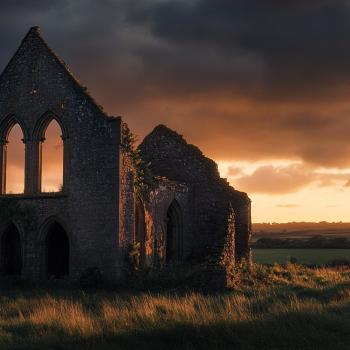
A recent school shooting had taken place. It alarmed and grieved many of us, who followed another tragedy unfold in the news. As I walked through the hallways at a predominantly White high school, the tension pulled at me with each step. I overhead a conversation. Congregated by lockers, a concerned White male student spoke with his peers. He confessed, “I’m scared about being here, not going to visit Central Elm High* (predominantly Black school).” His peers looked with sobering agreement, as if he had spoken a forbidden truth.
In his raceless language, this student exposed the failure of racial myths that had shaped his world. He critiqued the idea of safety and superiority because of the dominant presence of White individuals in his world. He recognized a trend of White male students turning on others- a trend masses of adults still ignore. I think it is past time to address this issue of White male mass shooters. This student confirmed what I began to recognize- a deep-seated issue and outcry of pain from White male adolescence to adulthood in violent responses to the limits of White racial, gender, and class norms.
This norm of racial isolation and de facto segregation, believed to protect White individuals from the Other and create superiority, keeps erupting and turning on itself. Currently, unless via an overt White supremacist context, these practices are enacted through a raceless or colorblind framework. This framework allows numbers of White people to continue to live racially without naming it. They live, work, worship, and send their children to schools in racially segregated settings using words like “good,” and “nice,” as code for predominantly White middle- affluent class. Despite living as “good” people, the unchallenged indirect messages about race persists. I have found that it is not enough to say to we do not care about are “polka dot” people, if our lives reflect otherwise. Clearly, children and adolescents are smarter than we think. Even with the best of intentions, we can reinforce the invisible, yet tangible narrative of White superiority. Combine this racial thinking along with the common United States male gender socialization around violence, strength, winning, athleticism, dominance, and other extremely narrow images, and these messages can give way to challenges for White male individuals who do not feel like they are experiencing the fullness of these privileges.
Studies show that the vast majority of mass shootings in the United States between 1982 and 2017 were by White male shooters. Between 1982 and November 2017, 54 out of 95 mass shootings were initiated by White shooters, where 92 were male. I do not perceive this pattern as a coincidence or something to be ignored. Depending on which index you use, the toll of mass shootings in the United States has been climbing at a rapid pace. I am observing more people shifting from seeking answers to demanding immediate resolution. I cannot blame them. After witnessing or experiencing these horrific events, we want the carnage to cease. We want to stop the evil from spreading. “Take away the guns!” seems like the easiest fix. Logically, if there are no guns, there can be no shootings. The pattern of White males who commit most of the mass murders in the United States is not a problem to be resolved by taking away guns and/or explaining it through a framework of mental illness. We do not have masses of mentally ill White males committing these crimes. Likewise, the shootings related to someone being off their medication constitute a minority. The pattern of White male mass shooters points out that we have a larger social and even spiritual issue at hand that needs to be addressed. I think these inexcusably heinous acts often reflect unresolved pain, hurt, fear, etc. I see people desperately suffering and acting it out because of our refusal to deal head-on with life and the way our social identities (nationality, race, ethnicity, religion, sexual orientation, ability, gender, etc.) influence it.
Because many of us struggle with taking up issues of race in everyday life, we falter in connecting race to catastrophic events. For some of us it is not even a blip on our radar, even with patterns staring us in the face. Is it possible that racism has an adverse, albeit toxic, impact on White people? Is it possible that racism, sexism, and classism lends to the toxic conditions that negatively influence different White male individuals? The answers are before us if we choose to examine our world more closely.
Letting Go of Racial Defensiveness
I think we need to examine mass shootings without racial defensiveness. Whenever race enters the conversation about mass shootings, masses get upset and point to another racial group as being more violent. From historical to present times, numbers of White people have used statistics to argue the inherent cultural and biological inferiority of Black people. Therefore, to draw from statistics pointing out a problematic pattern among White people can understandably feel like a dose of the same medicine to these individuals. Forgoing the typical rationales of coincidences and individual mental illness to focus on this racial and gender pattern in mass shootings disrupts the myth of this invisible White cultural superiority. Therefore, we witness people ignoring the pattern, speaking vaguely with colorblind rhetoric about “people” who cause harm, and discussing taking away all guns from private citizens.
I notice that people tend to take statistics and run with them, failing to understand that statistics typically point out the what of an issue. Instead using them as proof of racist assumptions, what if we used the statistics to launch more questions to understand the why’s and how’s of a phenomenon?
I cannot say this truth enough in my life or my writings: All of us have work to do. Assuming harmlessness in our racial socialization has created detrimental results (By the way, a raceless identity is a common component of a White racial socialization).
I argue that all of us are dealing with some of the adverse effects of ignoring how race and gender work in the United States. It impacts us in our intra-race relations in detrimental ways. Gun violence disproportionately impacts African Americans, whereby most crimes are committed by males. This issue deserves attention as to how race, gender, and class influences these behaviors, too. Does it mean we ignore the predominance of White male mass shooters because of it and vice versa? No. A host of White people and communities can benefit from re-examining the toxic norms from racism, sexism, and classism. I believe the same apply to particular Black communities who allowed different social influences to create toxic norms that impact the ways Black youth and adults perceive themselves. For example, fatherlessness was not a historical norm for Black families, and as a contemporary trend, it deserves examining. As much as it upsets different Black people to bring up this real issue, fatherlessness has an overarching detrimental impact of the lives of Black individuals. Again, we cannot effectively deal with understanding the issues to uproot them if we spend more time defending and ignoring problematic trends. I believe letting go of the racial defensiveness helps to make progress on our cultural rooms for improvement.
The Challenge With Becoming White
We often talk about the challenges with the construction of Black as a race, but at times, we fail to recognize the challenges with the White racial construct. White race was formed off of fear and lies of superiority. Just as Black was constructed off of a lie of inferiority. Neither of these identities were rooted in healthy sense of culture, mainly profit and greed through the use of contrast. Along with the myth of biological superiority, the pulpits to the media pushed the narrative of fear of the Other replacing or harming White people. This foundation has given way to today’s cultural superiority arguments and the media stories that push fear of White people being outnumbered in society and losing their deserved jobs, etc. to the Other.
When race was constructed in the United States as a way of creating a socioeconomic hierarchy based on the color of one’s skin, the European immigrants and descendants who agreed took on an ungodly bargain. Ever heard of divide and conquer? Wealthy White men could not afford for certain working-poor European immigrants to unify with People of Color to potentially threaten their political and economic status. Creating this White identity served to preserve their wealth and gain power by unifying Europeans under a White identity, so that even the poor White man’s woes were pacified by the hope and dream of a piece of the American pie. We can stand to do more examining of the policies and programs benefitting White men since the founding of the United States of America.
As a result of race creation, today, White males of all class backgrounds are typically socialized to be blind to the laws and ways a social culture might advantage them in their hard work. They, along with most of us in this country, learn a history of White male exceptionalism, minimizing the weight horrid politics and egregious actions used to help make this greatness happen. The implicit expectation of a superior way of life as part of their social identities has not vanished from all of White male socialization. What happens when a White male adolescent or adult does not feel like he is getting his share of this deserved place within society or his social world at school? For a fraction of White male individuals who do not feel like they are getting their rightful end of the racial, gender, and class bargain, it can lead to violent results.
Rethinking White Masculinity
Particular White males whose lives do not feel like the great stories of White male exceptionalism, and instead feel emasculated and rejected highlight a need to rethink White masculinity. When numbers of these White males’ reality do not align with the race, class, sexual orientation and gender privileges associated with this narrowly constructed and skewed vision of White manhood, they can react in violence as a way to assert masculinity. They draw from their social toolkit of manhood to dominate a situation where they regain power through mass shootings. After all, from the military to mobsters, our society rewards and recognizes the tough guys who are in control. Most young men learn violence as a part of their masculine socialization from a young age.
This is one of the reasons why White women and adolescents, who experience the same kinds of loss, do not typically turn to violence. More commonly, they are not socialized to connect their sense of female identity to violence. In his work on the intersectional identities of mass murderers, McFadis (2014) points out,
Though many mass killers experienced gender challenges as a result of downward mobility, subordinated masculinity, and/or other personal life failures such as divorce, this shame and humiliation may be replaced with a gender performance, and as violence is synonymous with masculinity in American culture, the mass killer perceives that the more violent his actions, the more manly and respected he will be. For entitled white men who long to feel the masculine pleasures of power, strength, and domination, a massacre can be a show of force, even if it is a life-ending one, which serves to bring the killer back (or forge anew) a masculine identity full of pride, accomplishment, and even international fame (p. 81).
When examining profiles of the adolescent to adult White male mass shooters, we see a pattern with failure to cope with this narrow construction of White masculinity. The creation of a racial identity through the oppression of other people can weaken the psychological resiliency of certain White male individuals. Given the lack of psychological experiences of living in a society where the dominant message of racial and gender inferiority pertains to them, specific White males can lack the wherewithal to deal with rejection based on their social identities. Racist and sexist thinking might amplify even more in their desire to feel better about themselves.
As far as school shootings, we commonly find the White male shooter did not fit the narrow roles of being the “alpha” male, the athletic “jock,” the ones who had the love interests, and status that supposedly comes along with the dominant idea of White masculinity. Instead we often find those who were considered “mama’s boys,” “nerds,” shy, artistic, etc. (McFadis, 2014), who even might have experienced bullying and challenges to their heterosexual orientation.
From Crisis to Intention
When we are in pain and crisis, we cannot see pass the fog of tears and grief to even go to this place. We feel as if we need to stop the hemorrhaging by taking away guns, as an alternative to bleeding to death waiting for long-term solutions. As a matter of fact, hopelessness has been prevailing so much that masses do not even see an alternative. I am thinking of alternatives that requires us to roll up our sleeves and open our minds with love.
We can begin to remove the toxicity by intentionally and lovingly challenging the narrative of what it means to be White and to be male. This work requires White people to learn more about race and how it works, as it pertains to their own racial identity—not just the Other. Although I think it is necessary work for people across race, I specifically point out White people in this context because different White people do not even recognize the ways they live and do race. By choosing to dismantle the problematic aspects of White racial norms and keeping the helpful ones, White individuals can better support young or adult White men with developing a healthy racial identity. All of us can begin to make more visible the ways heterosexism, sexism, racism, ageism, classism functions within race and across race in our cultural norms. Given that young men across race hurt from narrow constructions of masculinity, we work to expand the way we construct our identities, especially masculine and feminine identities to create more accepting spaces for all.
Do I think we need more gun regulations? Absolutely. Do I think taking away all guns is the answer? No.
It is easier to ask our government to do something for us, instead of using our power to get to the heart of the issues. Removing all weapons gets rid of tools used to express social toxicity within a society. The toxicity, the anger, the rejection, the hurt, and disappointment remaining will still find another outlet. I would rather create healthy conditions within a society where people can responsibly own firearms without wielding them on each other. I desire people to have a sound sense of identity without succumbing to the artificial hierarchies we reinforce through our social identities.
In our microwave society, we want things done sooner rather than later. I, for one, want to know how to get to tomorrow’s results on yesterday.
Look at how many of us typically “do life” in America:
How many of us trust in medications to treat illnesses and diseases that can be remedied with lifestyle changes?
How many of us prefer not to make time to rehabilitate people who engaged in crimes, but rather lock them up?
One thing I have learned over the years is that quick fixes do not remedy problems in the long term. I am not satisfied with treating the disease ravaging our nation.
I want a cure.
I want healing.
I want the evil to stop.
Untangling ourselves from a racial bad deal we inherited is far more painful and requires something of us.
In order to free ourselves from the toxicity we allow to persist in our society, we take ownership of the ways we even unintentionally create a culture that gives way to the violence.
Instead of positioning ourselves as helpless children in need of a paternalistic government to control us, we can choose to uproot the deep issues giving life to destruction.
It requires that each of us look and take action on how we are constructing this world.
By doing so, we live as agents of our lives and the world.
*Pseudonym
















